Beautiful Xishuangbanna (3)
Primitive Tropical Rainforest Wangtianshu Scenic Area
on January 21,2015
According to the optimized schedule, today is the Wangtianshu Scenic Area in the primeval tropical rainforest.
Xishuangbanna Tropical Rainforest National Park Wangtianshu Scenic Area is located in the Buwa National Nature Reserve northeast of Mengla County, covering an area of 20 kilometers. 14 kilometers away from Mengla County and 134 kilometers away from Jinghong City.
There are many tropical rainforests in Yunnan, and Wangtianshu Scenic Area is the only pristine tropical rainforest recognized by the world. It used to be used for scientific researchers to study tropical rainforests, but now it is open to the public.
Depart at 8:30 a.m. and arrive at Bubeng Wharf in Wangtianshu Scenic Area at 11:15 a.m.(you can also go directly to the gate of the scenic area). We chose to enter through the waterway and enjoy the scenery of the Nanla River.

Nanla River is the last first-class tributary of the Lancang River before it left the border. It is the largest river in Mengla County and the largest river in Mengla County. It originates from the northeast of Mengban Town, Mengla County and flows through Yaoqu Township, Mengban Town, Mengla Township and Shangyong Township from north to south. It turns west in Mengban Town, flows through Mangoshu Township, and injects into the Lancang River at the junction of China, Laos and Myanmar. The total length is 186 kilometers; the drainage area is 4563 square kilometers, and the average annual flow is 2.227 billion cubic meters.
It is said that Buddha Sakyamuni traveled here and stopped to lecture. The people of the Dai family saw that it was very difficult for Buddha to lecture, so they offered tea one after another. Buddha sprinkled the leftover tea on the spot. In an instant, there was a tea river (Dai language "Nanla" means "tea river") on the edge of the forest, which is the Nanla River we see now.
This river is still clear water and beautiful scenery that has remained unchanged for ages. The Nanla River is just a stretch of sightseeing, and we will go ashore when we reach the Rainforest Pier.







Walking up from the Rainforest Pier is the entrance to the Wangtianshu Scenic Area.

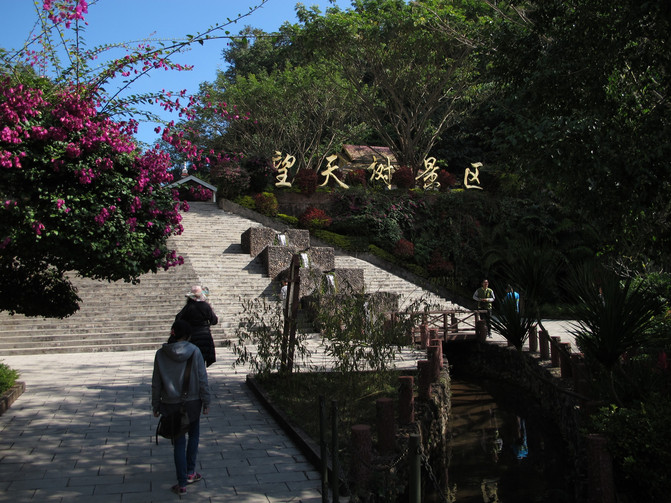



Entering the park, we first took the Tropical Flower Avenue to admire tropical plants.
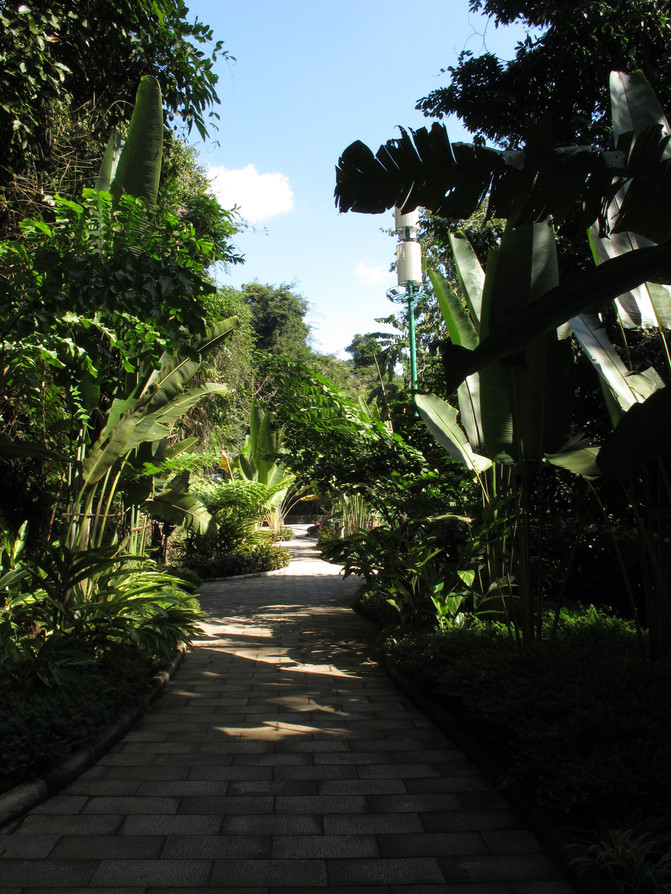
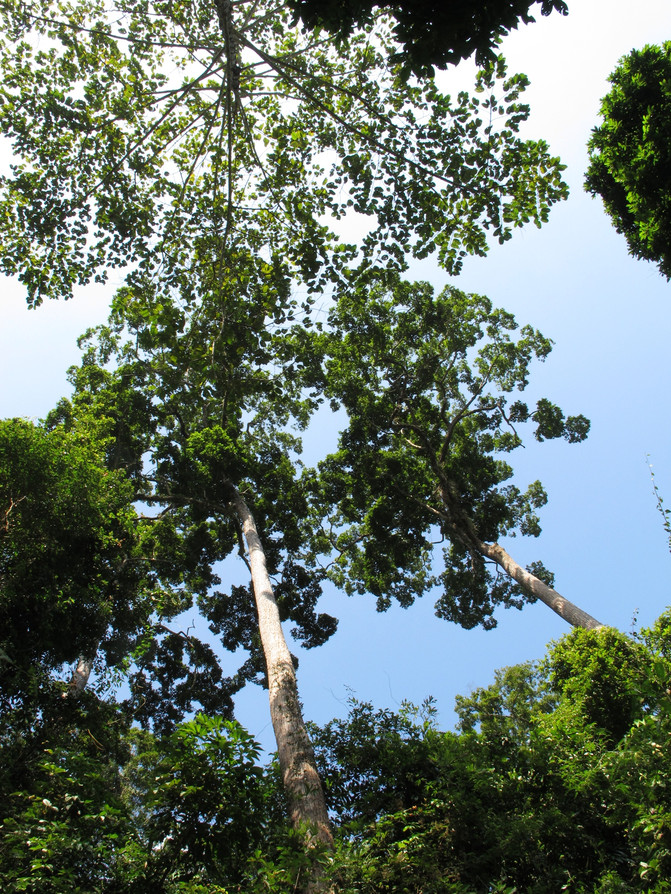


At the end of Flower Avenue is the entrance to the Crown Corridor. In the Wangtianshu Scenic Area, there are many towering trees 40-70 meters high with a tree diameter of about 1 meter. The trees are connected by steel cables, hung with rib frames, and blocked by mesh splicing belts on both sides, so that people can walk on it. This is the so-called canopy corridor, which is about 30 meters above the ground. Each tree has a platform for people to rest or relax. There was a slight wobble when walking. People who were afraid of heights did not dare to walk, and those who were timid shouted while walking. It was a piece of cake for me. I didn't even have to pull the handrail when walking on it, and I took videos while walking.





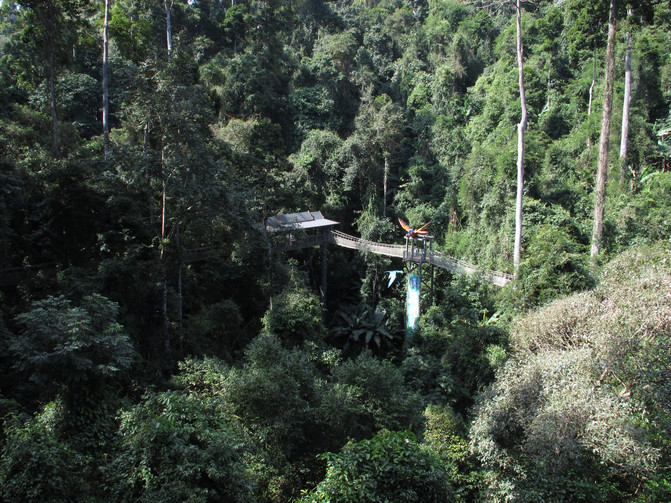


After walking through the canopy corridor, I felt like I had taken a walk in the air for a while. There were very few people in the scenic area, so there were only the three of us at the time. After walking for a while, we heard the screams of girls and the laughter of boys from behind. The scenic area requires one person to arrive at the platform of the previous tree before the latter can leave. If many people walk together, it will probably shake badly and be unsafe. In fact, the mesh of the guardrail is very dense and cannot fall down even if you want to.
After descending the canopy corridor, there are two paths to choose from. One is the Cai Xitao Trail and the other is the Philip Trail. Judging from the map, Philip Trail is shorter than Cai Xitao's Taoist Priest. Both roads are taken, and there is a need to go back and time is limited. Finally decided to take the Phillip Trail.
Philip Trail is named in memory of Prince Philip, Duke of Edinburgh, England, who witnessed China's tropical rainforest to the world. In 1986, Prince Philip, Chairman of the World Wildlife Fund, visited Xishuangbanna for inspection. He was deeply shocked by the animals and plants here, especially the tall and straight Wangtian trees. After returning, Prince Philip introduced to his colleagues his inspection in Xishuangbanna, China, to witness the situation of tropical rainforests. He also wrote a book and introduced the Xishuangbanna rainforest to the world. The tropical rainforest in Xishuangbanna, China followed Prince Philip to the world, so people called the path that Prince Philip took to inspect the tropical rainforest the "Philip Trail."
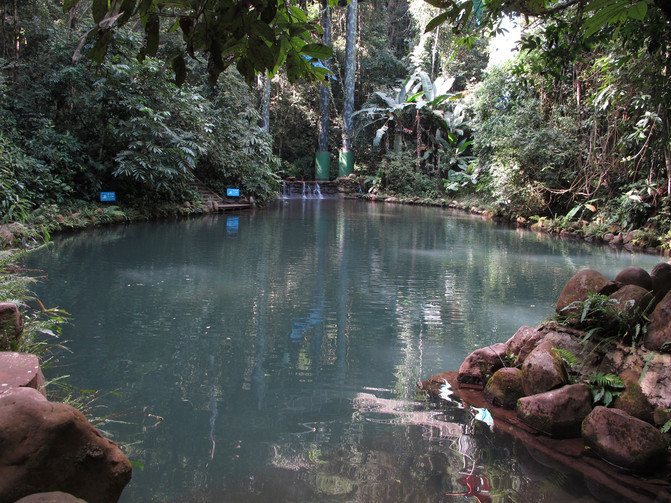





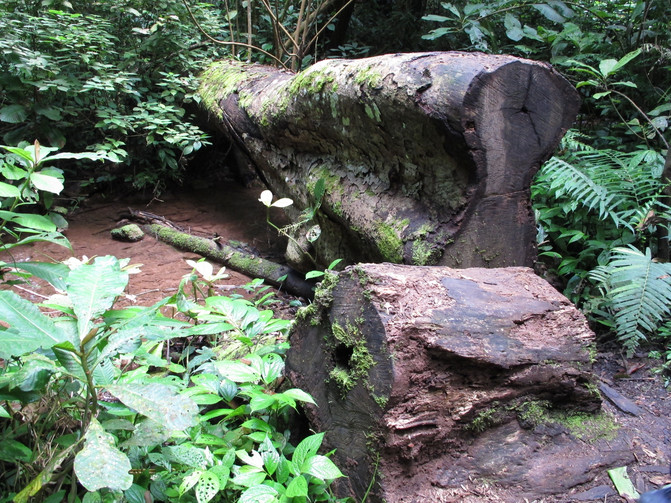



Strangulation--Strangulation is a unique landscape in the tropical rainforest of Xishuangbanna. Most strangulated plants are banyan trees. The seeds of these strangulated plants are mostly blown to the trunks of palm trees, hemlock trees, etc., which are easy to grow by banyan trees through bird droppings or by the wind. After germinating, their roots are implanted into the bottom of the strangulated plants. The strangulation plants wrap around the stems of palm trees, hemlock trees, etc., competing with the strangulation plants for nutrients and water. The strangulation slowly grows into tropical plants that are both epiphytic and autonomous. A few years later, the roots of the strangled plants firmly cut off the water supply of palm trees and hemlock trees, and the strangled plants will gradually die due to lack of nutrients and water.

Another unique landscape is the plank root, where the roots of the tree are shaped like a plank.



The Wangtianshu Scenic Area is very large. We have limited time and only seen these three categories. When you go there in the future, you must drive yourself, stay in Mengla County or Wangtianshu Scenic Area for one night or more, and slowly enjoy it.
Previous Article:Xishuangbanna Vacation Travel Tips: Which attractions are better for couples to visit when traveling?
Next Article:Xishuangbanna: A comfortable life south of the border
